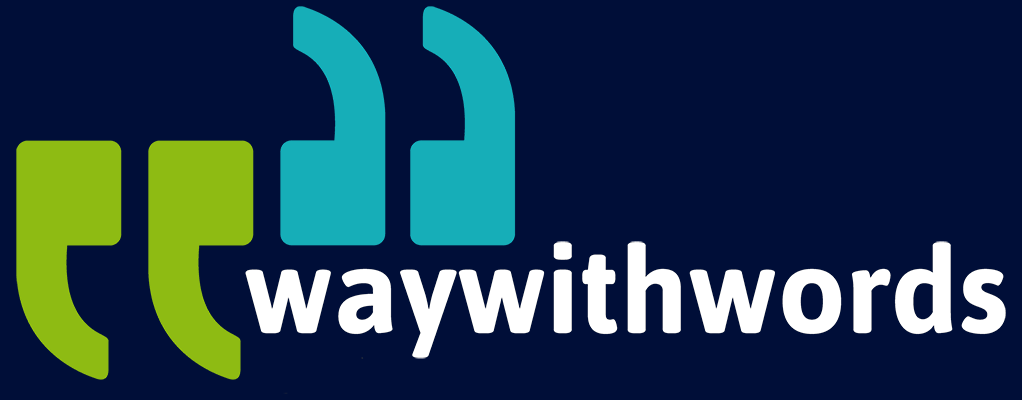Why Are Transcription Services Crucial in Journalism & Media?
The Importance of Media and Journalism Transcription Services
Accuracy. Accountability. Accessibility. These aren’t just tick boxes—they’re the heartbeat of responsible journalism and quality media production. Every news report, marketing or PR agency campaign, investigative feature, podcast episode or documentary relies on a core process that supports the storytelling: transcription. Behind the scenes, transcription helps tie together raw interviews, soundbites, field recordings, and editorial decisions into cohesive, publishable content.
Whether it’s a journalist filing daily reports, a podcast host preparing a new episode, or a documentary team piecing together footage from dozens of sources, transcription is where content starts to take shape.
Unfortunately, many professionals still underestimate or overlook its importance until problems arise—misquotes, inconsistent facts, legal issues or missed editorial deadlines.
We often hear questions like:
- How do I ensure that what was said in an interview is represented accurately in my story?
- Do transcripts hold up in legal or editorial disputes?
- Can transcription really save me time and help scale my content across formats?
This short guide explores how transcription helps solve those challenges. From improving transparency in investigative journalism to making media accessible to broader audiences, the value of transcription lies in its quiet consistency—it does the heavy lifting that allows media professionals to focus on the craft of communication.
Quick Guide to Journalism Transcription & Interview Transcript Considerations
1. Transcribing Interviews for Accuracy in Reporting
A single wrong word in a quote can change the tone or meaning of an entire story. Verbatim transcripts offer journalists a safeguard against inaccuracies and help preserve the voice of the person interviewed.
When you’re juggling deadlines, it’s tempting to rely on memory or handwritten notes. But even the sharpest note-taker can miss subtle details—pauses, inflections, precise phrasing. A transcript becomes the single source of truth that enables journalists to reference and cite accurately.
Additionally, using searchable transcripts speeds up article development. You can pull quotes quickly, identify narrative arcs, and attribute statements with confidence. This leads to stronger storytelling and fewer editorial corrections.
Key points:
- Ensures precision in quoting interviewees.
- Builds trust with sources and readers alike.
- Reduces rework during editing and approvals.
- Supports transparent reporting and accountability.
2. Supporting Investigative Journalism with Precise Records
Long-form journalism and investigative reporting often rely on hours of interviews and background conversations. In such cases, transcription becomes essential—not just helpful.
Accurate transcripts let journalists cross-reference testimony, fact-check statements, and identify discrepancies. This is especially important when dealing with whistleblowers, sensitive subjects, or government accountability.
Moreover, working in teams means other people—editors, legal reviewers, producers—also need access to the source material. Sharing transcripts enables consistent understanding and helps ensure that nothing important is overlooked. They also act as a safety net should a story be challenged.
Key points:
- Empowers deep investigative storytelling.
- Facilitates collaboration with editors and legal advisors.
- Supports evidence-building and structured analysis.
- Preserves the integrity of complex narratives.
3. Creating Subtitles and Captions for Accessibility
Accessibility isn’t optional. If you’re producing content without captions or subtitles, you’re excluding part of your audience. And beyond inclusion, there’s also performance—captioned videos perform significantly better on social platforms.
Accurate transcription forms the basis for high-quality subtitles. Whether you’re publishing on YouTube, streaming platforms, or embedding content into your website, clean subtitles make your content more digestible and searchable.
From an accessibility perspective, subtitles ensure that people who are deaf, hard-of-hearing, or watching without sound can still consume your content. They also help with learning, language comprehension, and retention.
Key points:
- Crucial for content accessibility compliance.
- Enhances viewer engagement and understanding.
- Supports SEO by creating indexable content.
- Widens audience reach and retention rates.

4. Streamlining Content Repurposing for Print and Digital Media
Transcripts give you flexibility. That single interview? It could become a podcast episode, a Q&A blog post, a thought leadership article, and a social media reel. All from one source.
Instead of starting from scratch for every platform, a transcript offers raw material that can be adapted to suit each medium’s tone and format. Writers can extract strong pull quotes, editors can spot compelling hooks, and social media teams can lift soundbites directly for reels or audiograms.
With transcription, you’re working smarter. You’re creating once and distributing widely—with consistency.
Key points:
- Optimises content creation across multiple formats.
- Saves time and maximises editorial output.
- Maintains consistent messaging across platforms.
- Encourages smarter planning and asset reuse.
5. Enhancing Legal Protection with Documented Sources
Legal clarity is vital in journalism. If your story is challenged or a source refutes a quote, having a timestamped, verified transcript can make all the difference.
Transcripts show exactly what was said and in what context. They help defend against claims of misquotation or bias. They also allow legal teams to flag potential issues before publication, reducing liability.
In high-stakes reporting—such as political coverage, corporate investigations, or controversial topics—this documented accuracy can be the difference between credibility and crisis.
Key points:
- Acts as factual evidence in disputes.
- Strengthens legal review and editorial compliance.
- Reduces risk of libel or misrepresentation.
- Encourages ethical journalism standards.
6. Speeding Up Editing and Production for Podcasts and Documentaries
Editing without a transcript is like navigating a maze blindfolded. Having a time-coded transcript lets producers move quickly between segments, saving hours of editing time.
Whether you’re slicing together a podcast narrative or scripting a visual sequence in a documentary, having the words on paper lets you focus on structure, pacing, and flow. Producers can flag key moments, identify natural breaks, or script intros based on what was actually said.
Plus, team members in different locations can all work off the same material. This unified approach smooths collaboration and speeds up delivery.
Key points:
- Simplifies timeline-based editing.
- Aids faster collaboration between remote teams.
- Supports script development and voiceovers.
- Reduces production cycles and errors.
7. Improving Team Collaboration in Newsrooms and Media Projects
Modern newsrooms are fast-paced, collaborative environments. Transcripts make sure everyone from reporters to sub-editors is working from the same foundation.
Instead of passing audio files back and forth, transcripts provide clarity for meetings, editorial planning, and revisions. Everyone knows exactly what was said and where it fits into the story. For distributed teams, this clarity is vital.
Having access to a shared transcript also improves feedback loops, allowing editors to suggest changes directly on the transcript rather than speculating or reinterpreting quotes.
Key points:
- Promotes accuracy and alignment across teams.
- Streamlines collaborative editing and reviews.
- Minimises confusion and repeated communication.
- Ideal for hybrid or remote newsroom operations.

8. Archiving and Future-Proofing Media Content
Journalism is a long game. Years down the line, you may need to revisit an old interview, reference a quote, or find supporting material for a follow-up piece.
Audio and video recordings are difficult to search. Transcripts, however, can be tagged, indexed, and archived in digital databases. This makes retrieving specific content much faster.
A well-structured archive of transcripts becomes a living record of your organisation’s journalistic legacy. It enables cross-referencing, trend tracking, and adds long-term value to your editorial library.
Key points:
- Ensures long-term usability of raw content.
- Supports investigative continuity and historical analysis.
- Builds a searchable database of journalistic assets.
- Enables faster turnarounds for future projects.
9. Aiding Non-Native Language Comprehension and Translation
If you’re working on a story with international implications or multiple languages, transcription is essential. You can’t translate what you don’t fully understand.
Transcripts give translators a base text to work from. They allow multilingual editors to review statements and ensure that nuance is preserved. When combined with translation services or subtitles, transcription ensures your message travels clearly across borders.
It also enables your stories to be repurposed for global audiences, maximising their reach.
Key points:
- Helps maintain accuracy in translation.
- Supports subtitling, dubbing and local adaptation.
- Improves cross-cultural editorial review.
- Expands content reach to global markets.
10. Enhancing Editorial and Fact-Checking Processes
At the heart of credible journalism is accuracy. Before any story is published, editors and fact-checkers need to verify sources, check consistency, and confirm quotes.
Transcripts make this possible. Instead of chasing audio or requesting clarification from reporters, editors can quickly access verified statements. Fact-checkers can run searches across transcripts to compare against external records.
Ultimately, this builds reader trust—and reduces the likelihood of corrections or retractions post-publication.
Key transcription for editorials pointers:
- Strengthens editorial and fact-checking processes.
- Speeds up final approval and publication.
- Builds credibility through source verification.
- Enhances audience confidence in content integrity.
Key Tips for Using Transcription in Journalism and Media
- Name and tag all files by date and topic – making content easier to locate in future.
- Use a mix of automated and human-edited transcription – to balance speed and accuracy.
- Always request time-stamps for long recordings – useful during editing and fact-checking.
- Share transcripts with your wider editorial team – it speeds up collaboration.
- Review transcripts before publication – to clean up filler words or contextual errors.
Transcription is the behind-the-scenes support that ensures media content is accurate, accessible, and professionally produced. While it may not be glamorous, it’s foundational to everything journalists, editors, and producers create.
From supporting quotes in breaking news stories to building subtitled documentaries or translating interviews for global use, transcription touches every stage of the content cycle. This guide has expanded on ten key areas where transcription makes a significant difference, and highlighted the practical benefits—speed, precision, consistency, collaboration, and protection.
For those working in journalism and media, embracing transcription as part of your regular workflow is a smart investment. It gives structure to your creativity, safeguards your reporting, and helps your message reach further.
Journalism Transcription Resources
Journalism (Wikipedia) – Explores the principles of journalism, including sourcing, fact-checking, and content creation.
Transcription Services Resource: Way With Words: Transcription Services – Way With Words employs advanced technology and highly skilled transcribers to overcome common challenges in transcription, ensuring that clients receive accurate and reliable transcripts regardless of the complexity of their audio files.
